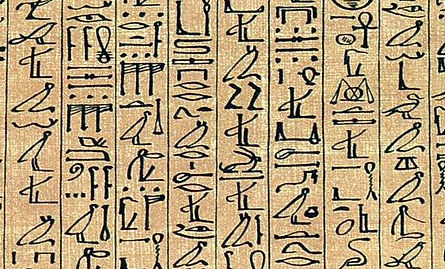



Crime and Punishment in Ancient Egypt
By
Sarah Katsuleres
No civilization has ever been above breaking the rules. When you have a society of upper and lower classes, crime is
inevitable. In ancient Egypt, during times of civil unrest and social upheaval, members of the royal courts have been known to
commit crimes as well as the common man. In a civilization that came from nothing and become one of the most organized
and influential civilizations of all time, how was order kept? What types of crimes were committed and what were the
punishments?
Religion was the ultimate force behind all aspects of daily Egyptian life, including law and order. “Egyptian law was based
on a common sense view of right and wrong, following the codes based on the concept of Ma'at. This concept allowed that everyone should be viewed as equals under the law regardless of wealth or social position” (Dunn & Andrews: 1996-2013) Ma’at is a goddess that personifies truth, balance, order and justice. The Egyptian’s believed that if she did not exist the Universe would be in chaos. The “codes of conduct” under Ma’at were intertwined with all aspects of daily life. It was each individual Egyptians’ responsibility to maintain these codes to keep the universe in order. (Brewer & Teeter. 1999, p.86) It was the Pharaohs responsibility to ensure that his people followed the rules of Ma’at. The Pharaoh was the ultimate judge and law maker. The Ancient Egyptians believed that by obeying the Pharaoh he would then in turn protect the people and the lands. (Brier & Hobbs. 2009, p.73) The most serious cases of crime were decided by the Pharaoh and sometimes by an appointed government official.
The most documented crime of ancient Egypt was theft among all social classes. A common punishment for theft was “100 blows and five open wounds”. In some of the more severe cases, “disfigurement, like cutting off of the ears and enslavement were also imposed”. (Dollinger: 2000-2014) One of the most heinous acts of thievery was robbing a royal tomb. Royal tombs and its contents were very sacred to the ancient Egyptians. So, by defiling any royal tomb resulted in the most brutal punishment of all, execution. This sentence was usually carried out by forcing the criminal to commit suicide or be impaled. The death penalty was the punishment for any crime committed against the state. During the late New Kingdom, known as the Ramesside Period, wages were rarely paid on time or if at all making it difficult for people to live. This lack of pay was not just for the lower class, the royal scribes and priests suffered as well. Gangs of scribes and priests banded together to rob the royal tombs and then divide the loot among them. When members of these gangs were caught, they were beaten into revealing the names of the other members of their gang. When all of these men were caught they received their punishments. Sometimes the families of the criminals were punished as well by being exiled to Nubia. (Dollinger: 2000-2014)
The development of a prison system did not exist until the Middle Kingdom and was mostly used for
servants and foreigners. The ancient Egyptians used disfigurement as a punishment for less severe crimes.
This form of punishment was not only used to inflict pain, it was used as permanent “marker” that the accused
would have to live with in his daily life. For example, if a man was missing an ear, the people would know that he
was thief and could never be trusted. The criminal would have to live in shame which is a much greater
punishment then being locked in a prison. (Brewer & Teeter. 1999, p. 74-75) For those who prevented
“free traffic” along the Nile had their noses cut off and were exiled to Tharu, also known by the Greeks as,
Rhinocolura. Women who committed adultery also had their noses cut off as a way of “destroying” their
attractiveness thus preventing more acts of adultery. Men who raped “free born” women were castrated.
(Dollinger: 2000-2014)
The ancient Egyptians laws against crime and punishment continued to influence many civilizations including the ancient Greeks and Romans. The Greek legal system adopted many aspects of the Egyptians laws. When the Romans took over Egypt, their legal system included both Greek & Egyptian laws. Much of the Roman legal system in still practiced today.
Works Cited
Brewer, Douglas J. and Teeter, Emily. Egypt and the Egyptians. (Cambridge: Cambridge University Press, 1999)
Brier, Bob and Hobbs, Hoyt. Ancient Egypt: Everyday Life in the Land of the Nile. (New York: Sterling Publishing, 2009)
Dollinger, Andre’. “Law and Order: Criminals and Their Crimes”. reshafim.org, (2000-2014) Accessed (Nov 2014)
http://reshafim.org.il/ad/egypt/law_and_order/index.html
Dunn, Jimmy and Andrews, Mark. “Law and the Legal System in Ancient Egypt”. Tour Egypt, (1996-2013) Accessed (Nov 2014) http://www.touregypt.net/featurestories/law.htm

